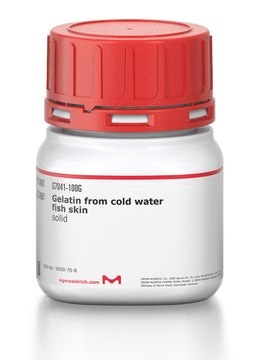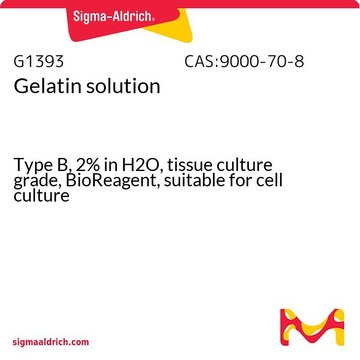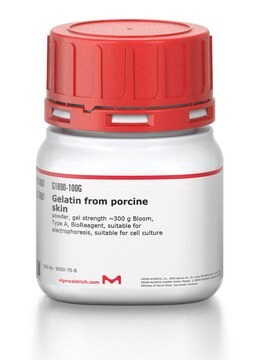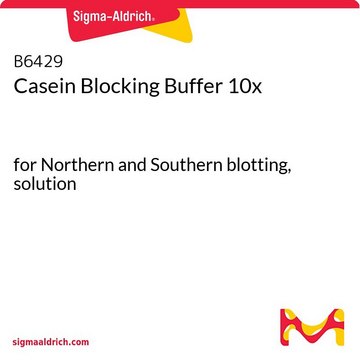Kluczowe dokumenty
G7663
Gelatin blocking buffer
for Western blotting, powder blend
Synonim(y):
bufor blokujący
About This Item
Polecane produkty
klasa czystości
Molecular Biology
for molecular biology
Formularz
powder blend
temp. przechowywania
room temp
Opis ogólny
Zastosowanie
Rekonstytucja
produkt powiązany
Kod klasy składowania
11 - Combustible Solids
Klasa zagrożenia wodnego (WGK)
WGK 1
Temperatura zapłonu (°F)
Not applicable
Temperatura zapłonu (°C)
Not applicable
Wybierz jedną z najnowszych wersji:
Masz już ten produkt?
Dokumenty związane z niedawno zakupionymi produktami zostały zamieszczone w Bibliotece dokumentów.
Klienci oglądali również te produkty
Protokoły
In order to specifically detect an antigen or target molecule immobilized on a solid support, unoccupied binding sites on the support must be blocked against binding by probe and detection molecules.
An introduction to both Northern and Southern blotting, popular methods for the transfer of macromolecules to membranous support. This article also offers a Southern blot protocol and a northern blot protocol.
Poznaj podstawy blottingu Northern i Southern, wraz z protokołami i aplikacjami do przenoszenia makrocząsteczek na nośniki membranowe.
Nasz zespół naukowców ma doświadczenie we wszystkich obszarach badań, w tym w naukach przyrodniczych, materiałoznawstwie, syntezie chemicznej, chromatografii, analityce i wielu innych dziedzinach.
Skontaktuj się z zespołem ds. pomocy technicznej









![Western Blocking Reagent, Solution solution, sufficient for 10 blots (11921673001 [100 cm2]), sufficient for 60 blots (11921681001 [100 cm2])](/deepweb/assets/sigmaaldrich/product/images/352/091/ef743cea-ccd8-44f1-8f3b-dec5a1e4f5d1/640/ef743cea-ccd8-44f1-8f3b-dec5a1e4f5d1.jpg)



